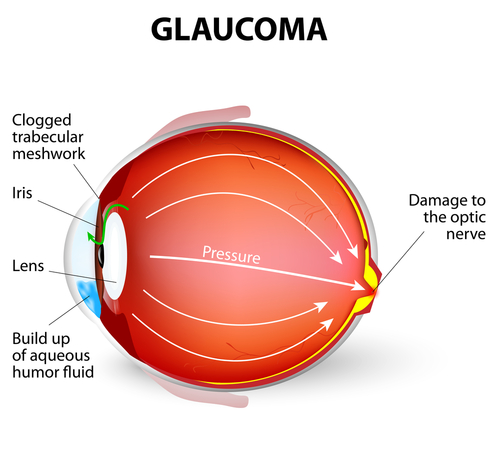Could Glaucoma Treatment Lower Your Intraocular Pressure?
February 13, 2024
Glaucoma affects around 3 million Americans, and it's one of the most common causes of vision loss. The root cause of most cases of glaucoma is excessive pressure in the eye, which damages the optic nerve.
Early detection and treatment can reduce intraocular pressure and slow or halt vision loss. Keep reading to learn more about glaucoma and if glaucoma treatment could lower intraocular pressure in patients!
What is Glaucoma?
 Glaucoma refers to a group of eye conditions that damage the optic nerve. The damage is often related to increased pressure in your eye.
Glaucoma refers to a group of eye conditions that damage the optic nerve. The damage is often related to increased pressure in your eye.
However, glaucoma can also happen if intraocular pressure is within normal ranges. During its earliest stages, you might not notice any symptoms of glaucoma.
Over time, the optic nerve gradually deteriorates, and vision slowly declines. Patients with glaucoma are often unaware they have the eye condition until irreversible vision loss has already occurred. Symptoms of glaucoma may include:
- Blurred vision
- Cloudy vision or halos
- Eye pain
- Headaches
- Redness
- Abdominal pain
- Nausea
- Vomiting
As the condition progresses, you will develop small blind spots in your vision. These will increase and can eventually lead to blindness.
What is Intraocular Pressure?
Eye pressure, or intraocular pressure, is the leading cause of glaucoma. Elevated eye pressure occurs as the result of fluid buildup inside the eye.
This fluid is called the aqueous humor. The aqueous humor is a normal part of the eye.
Excess aqueous humor typically drains out of the eye through the trabecular meshwork. The trabecular meshwork is a tissue structure where the iris and cornea meet.
However, if that drainage process is blocked or too much aqueous humor is produced, pressure in the eye builds up and can damage the optic nerve. There are two primary forms of pressure-related glaucoma: open-angle and angle-closure glaucoma.
Open-Angle Glaucoma
Open-angle glaucoma is the most common type of glaucoma. While all structures of the eye appear normal, fluid in the eye does not flow properly through the trabecular meshwork.
If fluid cannot flow as it should through the trabecular meshwork, it increases intraocular pressure and optic nerve damage.
Angle-Closure Glaucoma
Angle-closure glaucoma can cause a sudden buildup of pressure in the eye. This form of glaucoma occurs when the angle between the iris and the cornea is too narrow, and the drainage channel there cannot function properly.
Angle-closure glaucoma can also develop if the pupil opens too wide. When this happens, it narrows the drainage angle and blocks the normal drainage of the fluid.
The fluid then accumulates, causing the iris to block the trabecular meshwork, increasing intraocular pressure. In some cases, scars can form, which leads to an irreversible obstruction.
How Do You Diagnose Glaucoma?
Your Metropolitan Ophthalmology Associates eye doctor can identify early signs of glaucoma during routine eye exams. A routine eye exam can detect glaucoma early.
An early diagnosis makes it easier to manage the eye condition before symptoms develop. If you have symptoms of glaucoma, your ophthalmologist can offer options to minimize further damage and help reduce your intraocular pressure.
Tests for glaucoma include:
- Intraocular pressure measurements
- Dilated eye examination to check the optic nerve
- Vision tests to check for areas of vision loss
- Measuring corneal thickness
- Inspecting the drainage angle in the eye
Learn More About Glaucoma
Treating Glaucoma
Treatments for pressure-related glaucoma focus on reducing intraocular pressure. Reducing intraocular pressure helps prevent damage to the optic nerve. Ways of treating glaucoma at Metropolitan Ophthalmology Associates include:
Medication
 Prescription eye drops are the most common treatment for glaucoma. There are a variety of effective eye drops that can reduce pressure due to glaucoma.
Prescription eye drops are the most common treatment for glaucoma. There are a variety of effective eye drops that can reduce pressure due to glaucoma.
If eye drops are not effective enough on their own, your Metropolitan Ophthalmology Associates eye doctor may also prescribe an oral medication. Because glaucoma is a chronic condition, you may need to take medications and prescription eye drops to treat it for the rest of your life.
Your eye doctor will help determine the best medications to treat the eye condition.
Laser Treatment
Laser treatment can improve fluid drainage from your eye. You can have these treatments performed at our Metropolitan Ophthalmology Associates office and should be able to resume normal activities within 24 hours. Your ophthalmologist may choose to use laser treatment in addition to prescription medications.
Surgery
Depending on the severity of your glaucoma, your ophthalmologist may decide that a surgical procedure is the best option for treatment. Your eye doctor may also choose one of these procedures if you've tried other treatment options without seeing intraocular pressure levels reduced or managed.
Eye doctors use several different procedures for improving intraocular pressure. Surgical procedures used to treat glaucoma at Metropolitan Ophthalmology Associates include:
Trabeculectomy
During a trabeculectomy, your surgeon will create a tiny opening in the top of your eye. The opening will be under your eyelid, where no one will see it.
This opening allows extra fluid in your eye to drain away, lowering the pressure in your eye and keeping it under control.
Glaucoma Implant Surgery
During glaucoma implant surgery, your eye surgeon will implant a tiny tube called a shunt into the white part of the eye. The shunt helps drain excess fluid from your eye to lower your eye pressure.
Do you have questions or concerns about glaucoma? Schedule an appointment at Metropolitan Ophthalmology Associates in McLean, VA, and Chevy Chase, MD, to learn more! Better vision is out there, so why not take it?



